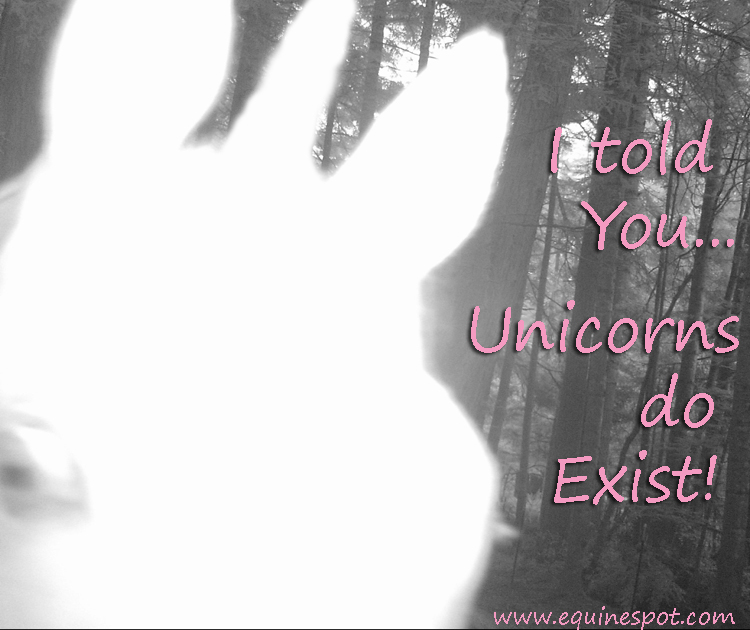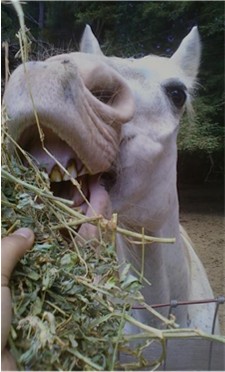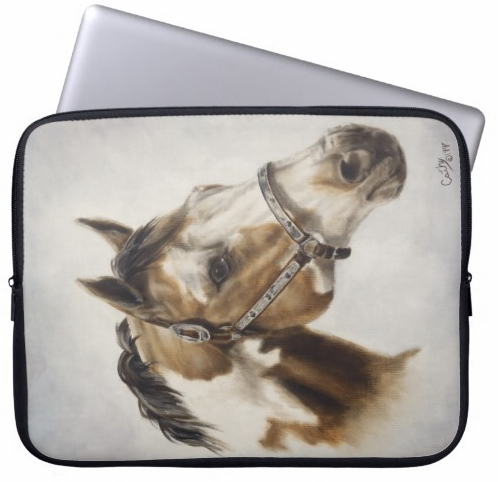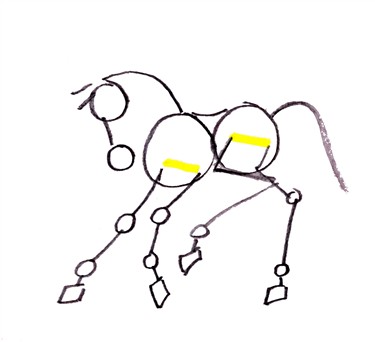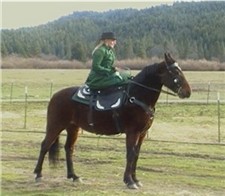Horse Colors in Pictures
There are only four basic horse colors. Bay, brown, black and chestnut. Everything else is a variation on these four colors...or the absence of color...giving you white.
The term 'markings' refers to the white areas on a horse, usually on the face and legs. The term 'black points' is used to describe a black mane and tail with black legs.
The 4 Base Horse Colors
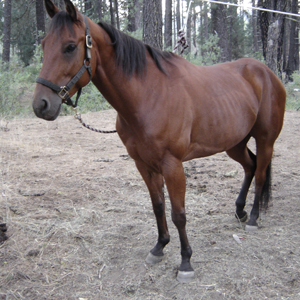 Bay
BayBay
A bay is any reddish, brown or dark brown color with black points. A very dark bay can be confused with black. Look for red undertones in the body and black points.
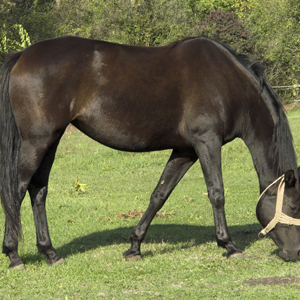 Dark Bay
Dark Bay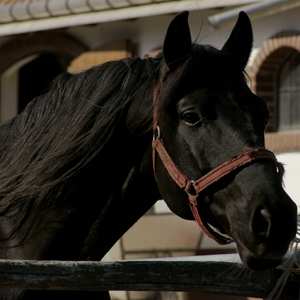 Black
BlackBlack
A black horse has a black coat and black points. Most black horses have white skin. A black with black skin is called a true black. Sometimes the Sun will burn reddish highlights into a black coat.
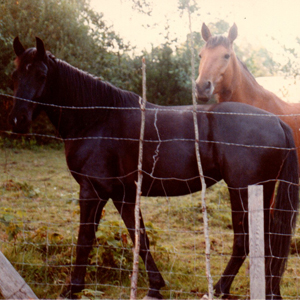 True Black
True Black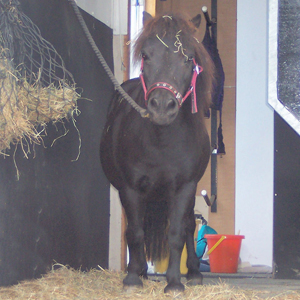 Brown
BrownBrown
A brown horse is brown with no black points. The color is more like chocolate, not reddish. Brown horses can be very dark, sometimes mistaking them for a black.
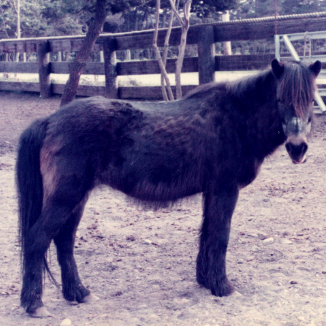 Dark Brown
Dark Brown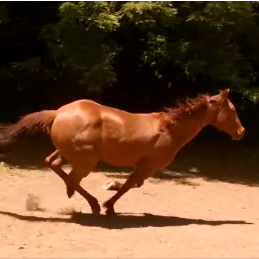 Chestnut
ChestnutChestnut
The chestnut color is basically red. It can vary from light to dark. They have no black points. A liver chestnut is a very dark chestnut. Notice the liver chestnut could be confused for a brown, if not for the reddish mane and tail.
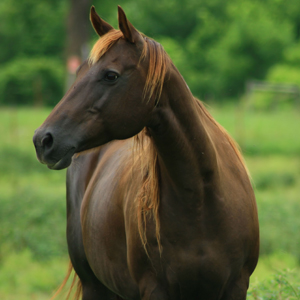 Liver Chestnut
Liver Chestnut
All the Other Horse Colors
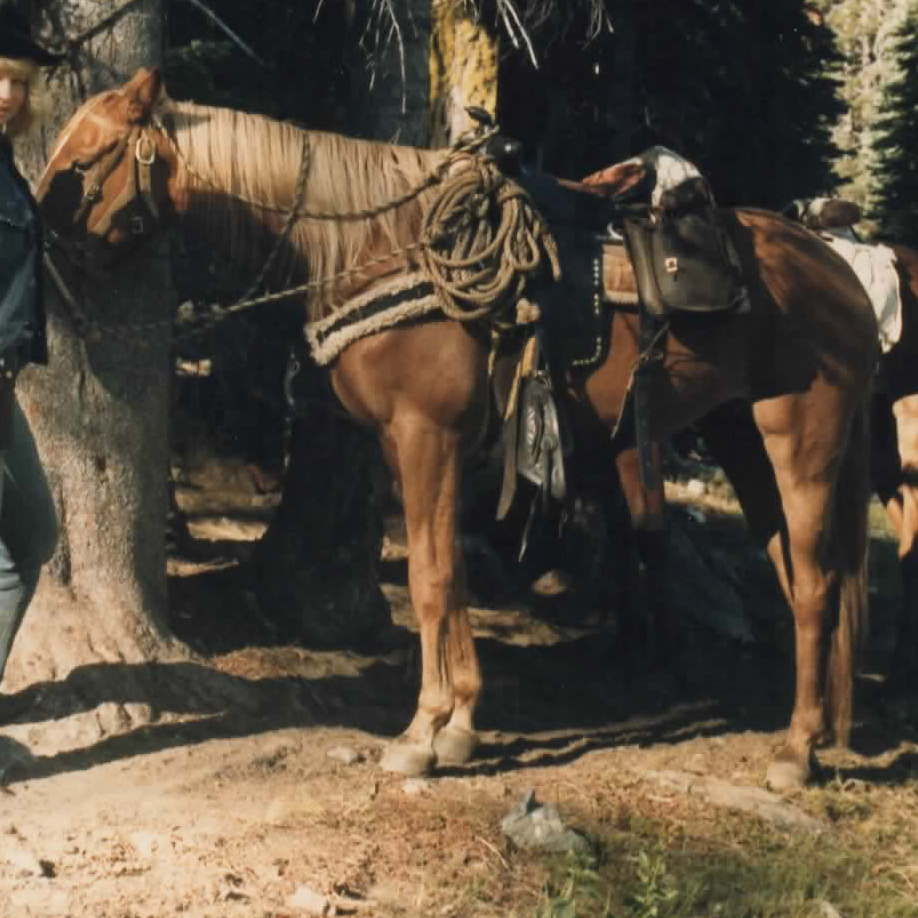 Sorrel
SorrelSorrel
A sorrel is a light reddish/yellow color. The mane and tail can be blonde or same as the body. In Europe it would be called a light chestnut. Here in America we call it sorrel.
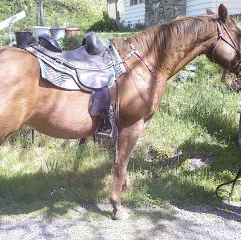 Sorrel
Sorrel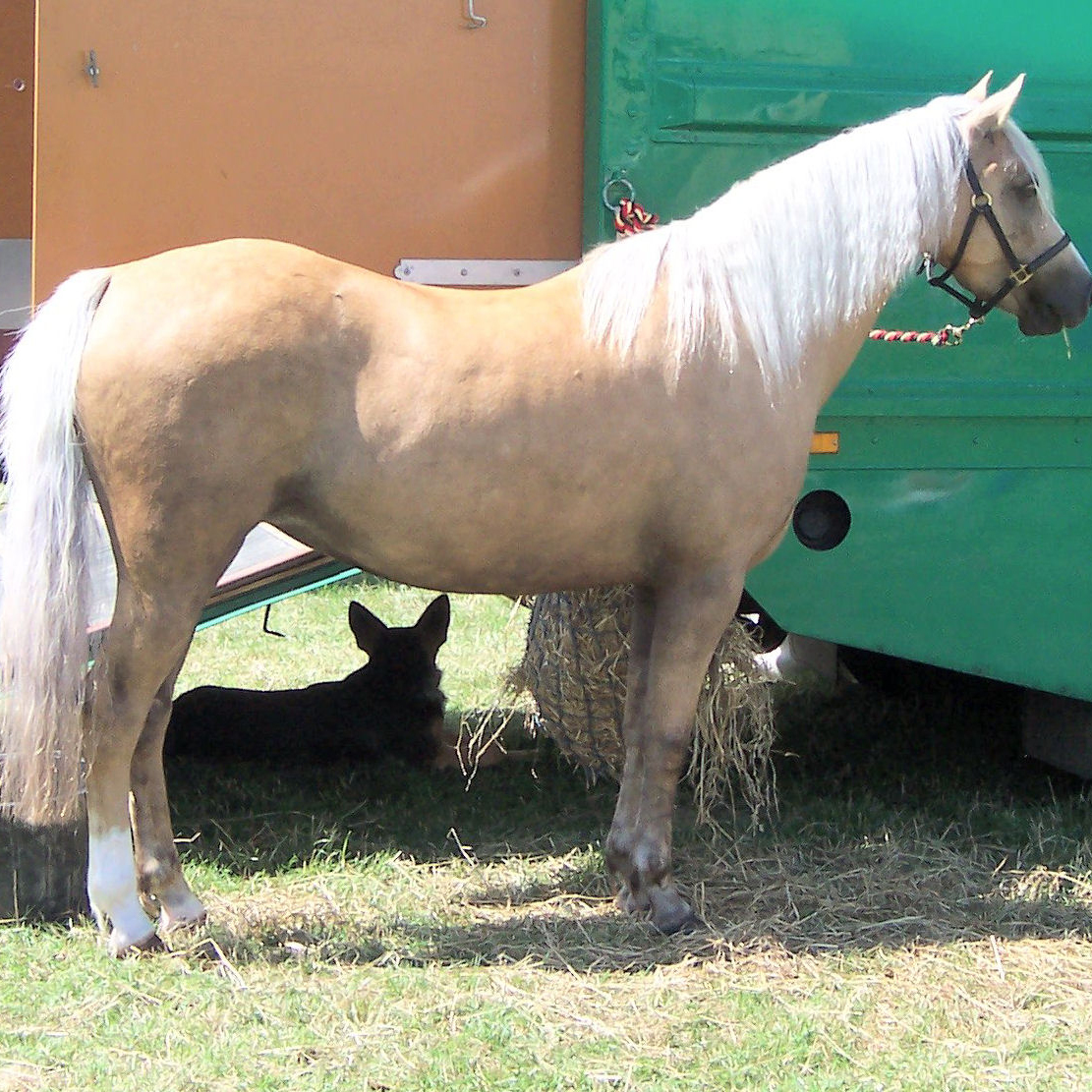 Palomino
PalominoPalomino
The palomino is a golden color with a white mane and tail. The Palomino is considered a color breed, meaning they can be registered with the Palomino breed association if they meet all requirements.
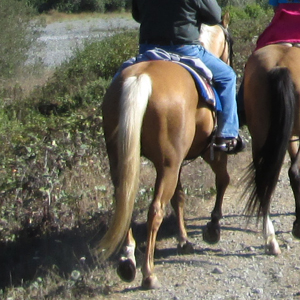 Palomino
Palomino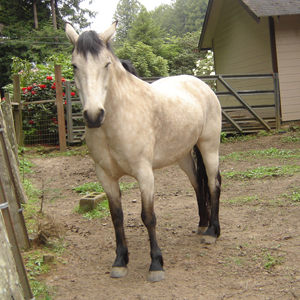 Buckskin
BuckskinBuckskin or Dun
The terms buckskin and dun are often used interchangeably, but there are differences. Buckskin is a yellowish gray with dark points. Dun tends to have more red in the coat. What's the difference between a dun and a bay? Duns have a dorsal stripe sometimes accompanied by a shoulder stripe or zebra stripes on the legs.
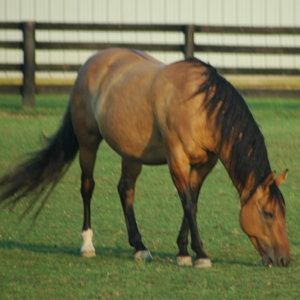 Dun has a Dorsal Stripe
Dun has a Dorsal Stripe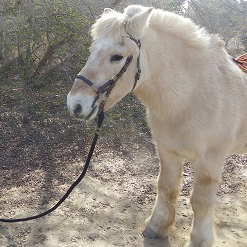 Cream
CreamCream
The cream color comes from the 'cream' gene. The cream gene dilutes the base colors chestnut, bay and black. When it dilutes palomino or buckskin, it gets even lighter.
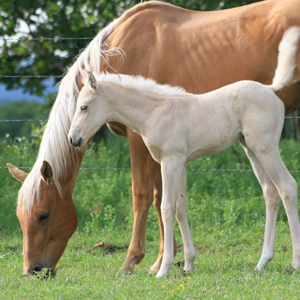 Cream
Cream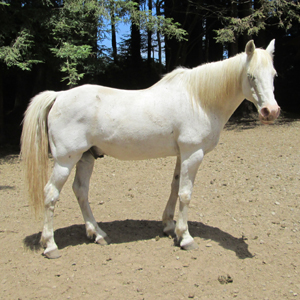 Gray
GrayGray
A truly white horse is very rare. Most white horses are really a light gray. Gray horses are often darker at birth and become lighter and lighter with age. The gray coat is made up of white hairs and hairs with color in them. Gray can be light or dark.
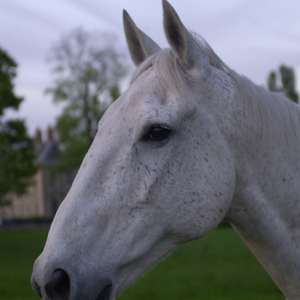 Flea Bitten Gray
Flea Bitten Gray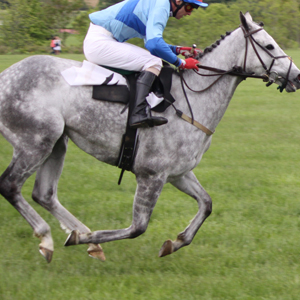 Dapple Gray
Dapple GrayDapple Gray
Dapple gray coloring is gray with distinct white marks splattered throughout the coat. When a dapple gray has black points, it can be called a blue roan as well.
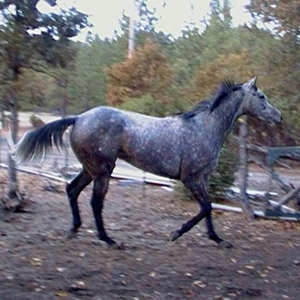 Dapple Gray/Blue Roan
Dapple Gray/Blue Roan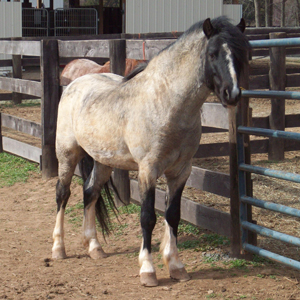 Grullo
GrulloGrullo
The Grullo color comes from a Dun overlay on a black. The hairs are mousy colored. They have dark points. They can have a dorsal stripe, zebra stripes (bars) on legs or a mask (dark face).
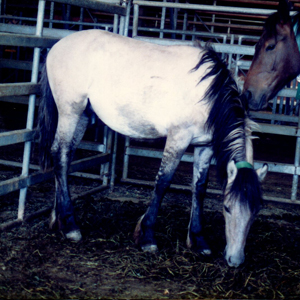 Grullo with Bars
Grullo with Bars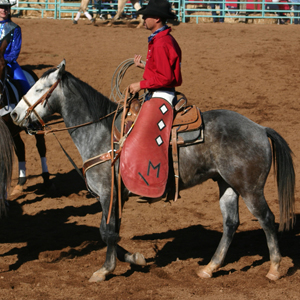 Blue Roan
Blue RoanBlue Roan
A Blue roan is a dark base color with white hairs mixed in. A Blue roan has dark points and black undertones.
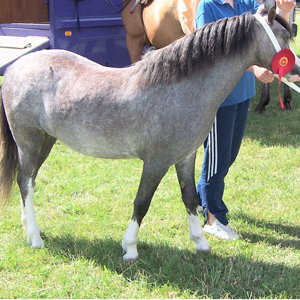 A Blue Roan with Socks
A Blue Roan with Socks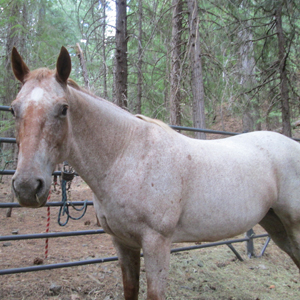 Red Roan
Red RoanRed Roan
A Red roan has a chestnut base color with white hairs mixed in and red or dark red/brown points. They can have red or blonde mane and tail.
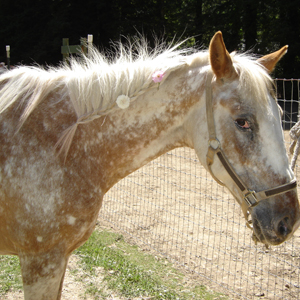 Strawberry Roan
Strawberry Roan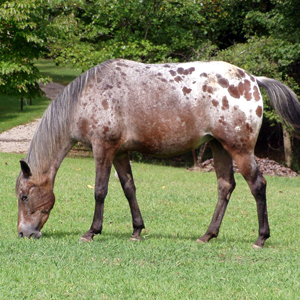 Appaloosa
AppaloosaAppaloosa
An Appaloosa is a spotted or speckled horse often with roaning. It is both a color and a breed of horse. They have spotted coats, mottled skin, white sclera and striped hooves.
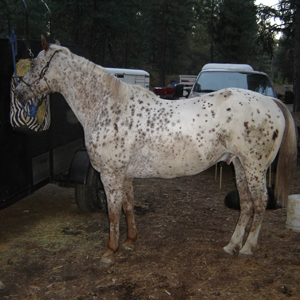 Appaloosa
Appaloosa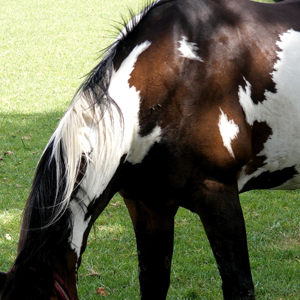 Paint
PaintPaint vs Pinto
The terms Paint and Pinto both refer to large spotted patterns on a horse. The difference is breed. A Paint horse can only be Quarter Horse or Thoroughbred lineage. Pinto is used to describe a spotted horse of any breed.
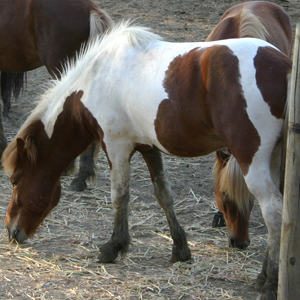 Pinto
Pinto
Horse Colors with Patterns
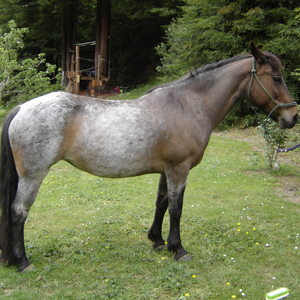 Roaning or Varnish
Roaning or VarnishRoan and Dapples
Roan or roaning on a horse is sometimes called varnish. Roaning occurs when white hairs are mixed in with the base coat color. Dapples are lighter colored round spots on the coat. They can be faint or pronounced. Some dapples are seasonal, appearing only on a Summer coat.
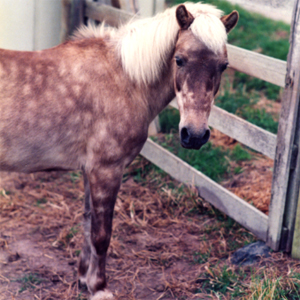 Dapples
Dapples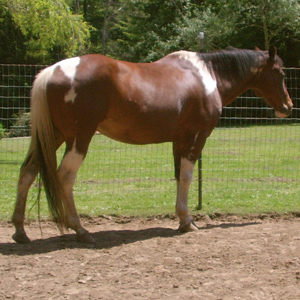 Tabiano
TabianoTabiano vs Overo
Tabiano and Overo refer to the spot patterns of Paint horses. Tabiano has white spots that cross over the top line. With the Overo pattern, the white markings never cross over the top of the back, neck or rump. Tovero is used for Paints that are not clearly Tabiano or Overo.
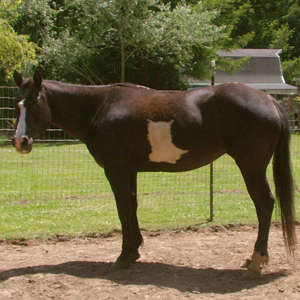 Overo
Overo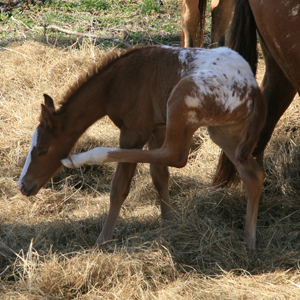 Blanket Appaloosa
Blanket AppaloosaAppaloosa Patterns
The blanket Appaloosa has a distinct white marking spread across the rump. It may or may not contain spots. A leopard Appaloosa has distinct leopard like spots over a white coat.
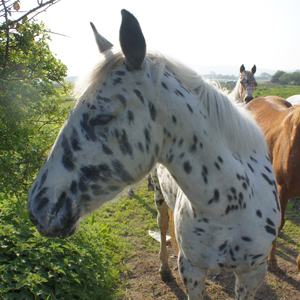 Leopard Appaloosa
Leopard Appaloosa
If you've enjoyed learning about horse colors, you'll enjoy the Horse Markings page too.
More Equine Topics You May Enjoy
Equine Nutrition
Have question about Equine Nutrition? How much to feed your horse? From salt blocks to grain choices it's all here.
Shop Horse Lovers Gifts
Find fun and functional gifts for horse lovers inspired by the art work of Cathy Cleveland.
Draw a Horse Rearing and Running
Drawing Horses in Action. Drawing horses is fun, but drawing them in action is pure joy! When you show movement in a drawing your whole picture will come to life. So let’s get started…
